
9(16)#7 2020 |
|
DOI 10.46640/imr.9.16.7 |
Maša Martinić, Jelena Hadžić i Marko Poljak
NEWTON Technologies Adria, Hrvatska
This email address is being protected from spambots. You need JavaScript enabled to view it.
Fakultet hrvatskih studija Sveučilišta u Zagrebu, Presscut d.o.o., Hrvatska
This email address is being protected from spambots. You need JavaScript enabled to view it.
Alma Mater Europea, Hrvatska
This email address is being protected from spambots. You need JavaScript enabled to view it.
Preliminary Communication and research
in Humanistic Sociology Series:
Models for adoption of New Technologies considering
Influence of Communication on individuals’ Behavior
Puni tekst: pdf (604 KB), English, Str. 2559 - 2577
Abstract
New technology is referred as any set of productive techniques which offers a significant improvement. What is seen as new’ is obviously subject to continual redefinition, as successive changes in technology are undertaken. The social and political impact of new technologies is complex being subject to variations in managerial strategies, worker resistance, and a host of other cultural and political circumstances. User adoption of new technologies and the models explaining their behaviors is an ongoing research problem.
Identifying the factors that affect the adoption of new technologies is understood by developing technology adoption models and theories with different theoretical insights, variables and measurements. To recognize the needs and acceptance of individuals is to realize the factors that drive user acceptance or rejection of technologies. Researchers can conceptualize underlying technology models and theories that may affect the previous, current and future application of technology adoption. As a case study, 50 users of new technology in Croatia were questioned regarding pros and cons and was determined majority will benefit from the use.
Key words: new technologies, technology adoption, technology acceptance models, humanistic sociology, communicology, human computer interaction.
Introduction
New technology is any set of productive techniques which offers a significant improvement as defined by A Dictionary of Sociology. What is seen as new' is obviously subject to continual redefinition, as successive changes in technology are undertaken. The social and political impact of new technologies is complex being subject to variations in managerial strategies, worker resistance, and a host of other cultural and political circumstances (Encyclopedia.com, 2019). User adoption of new technologies and the models explaining their behaviours are an ongoing research problem. Over the years, researchers have published a considerable amount of theories and models to assess the potential adoption of technologies by the end users.
Identifying the factors that affect the adoption of new technologies is understood by developing technology adoption models and theories with different theoretical insights, variables and measurements. This paper presents chronological development of the theories and models considering their interconnectivity and applications. Its importance lies in preparation for further research of adoption of new technology implemented in the public sector of the Republic of Croatia.
The following article is a firm overview of actual literature and models and should be a good basis for researchers interested in the area of technology acceptance, as it is an important business question, especially in sector of new, emerging and exponential technologies.
Overview of Technology Acceptance Models
The study of acceptance has emerged in 1970s as possibility of successful acceptance is an important factor in assessing the need for development or investing. All technology acceptance theories are designed to measure the degree of acceptance and satisfaction to the individuals against any technology or information system but from different points of view depending on the constructs or determinants which represent their structure (Momani & Mamoum, 2017, p. 51).
Recognizing the needs and acceptance of individuals is realizing the factors that drive user acceptance or rejection of technologies. Researchers conceptualized underlying technology models and theories that may affect the previous, current and future application of technology adoption.
This paper will discuss the main constructs of the following theories:
Innovation Diffusion Theory (IDT), Theory of Reasoned Action (TRA), Theory of Planned Behaviour (TPB), Theory of Interpersonal Behaviour (TIB), Technology Acceptance Model (TAM) and its derivatives, Unified Theory of Acceptance and Use of Technology (UTAUT).
Innovation Diffusion Theory (IDT)
Innovation Diffusion Theory was developed by Rogers in 1962 and is one of the oldest social science theories to study any kind of innovations. Rogers proposed that four major factors for determining the behaviour. Those factors are: innovation, communication channels, time and social systems (Rogers, 1983, p. 11).
The terms diffusion, innovation, and communication are defined by him as follows: Diffusion is the process in which an innovation is communicated through certain channels over time among members of a social system. Innovation is an idea, practice, or object that is perceived by an individual. Communication is a process that leads to create and share information with others in order to get a common understanding. Rogers stated that there are five innovation attributes which effect on individuals’ behaviours and explain the rate of innovation adoption. These attributes are: relative advantage, compatibility, complexity, trialability, and observability. Rogers stated that “individuals’ perceptions of these characteristics predict the rate of adoption of innovations” (Rogers, 1983, p. 210), Rogers noted that although there is a lot of diffusion research on the characteristics of the adopter categories, there is a lack of research on the effects of the perceived characteristics of innovations on the rate of adoption. He has defined the rate of adoption as “the relative speed with which an innovation is adopted by members of a social system” (Rogers, 1983, p. 23). For instance, the number of individuals who adopted the innovation for a period of time can be measured as the rate of adoption of the innovation. The perceived attributes of an innovation are significant predictors of the rate of adoption. Rogers reported that 49-87% of the variance in the rate of adoption of innovations is explained by these five attributes. In addition to these attributes, the innovation-decision type (optional, collective, or authority), communication channels (mass media or interpersonal channels), social system (norms or network interconnectedness), and change agents may increase the predictability of the rate of adoption of innovations. For instance, personal and optional innovations usually are adopted faster than the innovations involving an organizational or collective innovation-decision. However, for Rogers, relative advantage is the strongest predictor of the rate of adoption of an innovation.
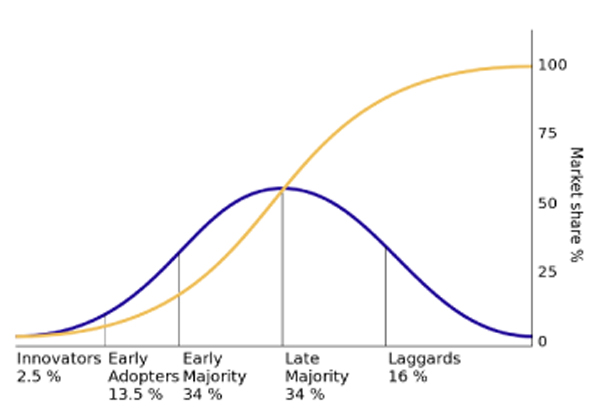
Figure 1. Successive groups of consumers according to Rogers. Adapted from Lai, 2017. Source: Wikipedia, 2019.
The diffusion of innovations according to Rogers. With successive groups of consumers adopting the new technology (shown in blue), its market share (yellow) will eventually reach the saturation level. The blue curve is broken into sections of adopters (Wikipedia, 2019)
There are several applications of Rogers’ theory and some of them were related to instructional computer usage (Sahin, 2006): examining the factors that might influence the decision to adopt new technologies in faculty members motivation (Medlin, 2001), examination of the computer level use in Ohio public schools (Isleem, 2003), investigating the faculty adoption of computer technology in North Carolina Community College System (Less’, 2003), Zakaria conducted a study to assess the factors affecting IT implementation in the curriculum (Zakaria, 2001), Ilin et. al. applied IDT and the environmental context from the technology-organization-environment (TOE) framework (Ilin, Ivetić, & Simić, 2017, p. 208) for understanding of e-business adoption in a case study of the Western Balkan peninsula. The model has been widely used to study the adoption of new technologies in many industries such as within construction industry (Weidman, Young-Corbett, Fiori, Koebel, & Montague).
Theory of Reasoned Action (TRA)
Theory of reasoned action was introduced in 1967. by Fishbein and further developed by Fishbein and Ajzen in 1975. and 1980. for sociological and psychological researches (Taherdoost, 2018, p. 961). It is one of the most popular theories used and is about one factor that determines behavioural intention of the person’s attitude toward a behaviour (Lai, 2017, p. 24). According to TRA, any human behaviour is predicted and explained through three main cognitive components, making it a general model and one of the fundamental theories of human behaviour (Momani & Mamoum, 2017, p. 53).
TRA explains human behaviour through main cognitive components including attitudes (unfavorableness or favourableness of persons feeling for a behaviour), social norms (social influence) and intentions (individual’s decision do or don't do a behaviour). This human behaviour should be volitional, systematic and rational (Taherdoost, 2018).
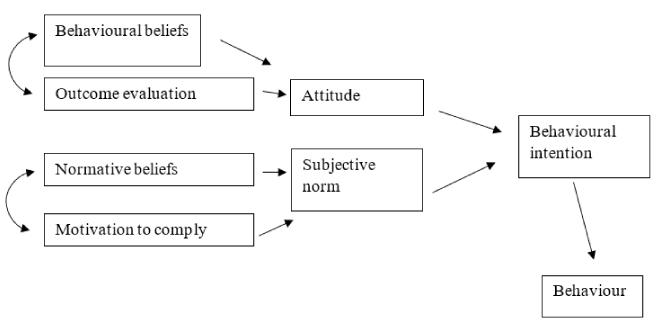
Figure 2. The Theory of Reasoned Actions. Adapted from Fishbein and Ajzen, 1975.
The theory’s limitations have to do with the transition from verbal responses to actual behaviour. The relations of beliefs, attitudes and subjective norms to intentions are more clearly delineated than the factors that determine whether the intention will be carried out. According to the TRA, intention is the immediate antecedent of behaviour (Ajzen, 1985, p. 18).
Table 1. Main constructs of the Theory of Reasoned Actions
Components: |
Disadvantages: |
Attitude |
The lack of addressing the role of habit |
Social norms |
Cognitive deliberation |
Social influences |
Misunderstanding through a survey |
|
Moral factors |
Theory of Planned Behaviour (TPB)
Theory of Planned Behaviour was developed by Ajzen in 1985. A new variable is added to extend theory of reasoned actions, which makes it an extension of TRA (Momani & Mamoum, 2017, p. 53) That variable is called perceived behavioural control (Ajzen, 1985). Perceived behavioural control is determined by the availability of resources, opportunities and skills, as well as the perceived significance of those resources opportunities and skills to achieve outcome (Taherdoost, 2018, p. 961). It is known as a control which users perceive that may limit their behaviour (Lai, 2017, p. 25).
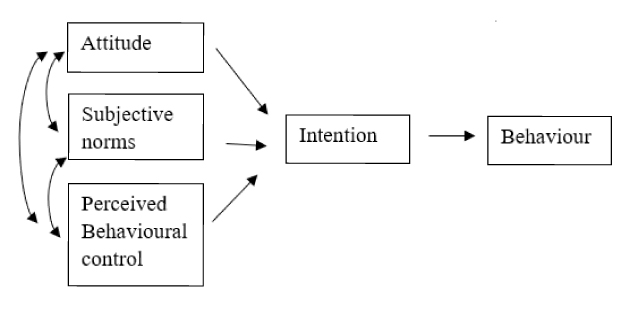
Figure 3. Theory of Planned Behaviour. Adapted from Lai, 2017.
A development of TPB over the time was systematically reviewed by Koul and Eygadi (2017). Their paper stated that much of the early research on TPB focused on replicating the results of the original study in different settings, cultures, and for a variety of behaviours (Venkatesh et al., 2007). After that, research focused on establishing the predictive validity of TPB and then eventually competing theoretical perspectives to enhance the richness of the original model (Venkatesh et al., 2007). One such refinement to the original model was achieved by the fusion of TPB and TAM into a novel decomposed model of TPB (Koul & Eydgahi, 2017, p. 108)
Table 2. Main constructs of the Theory of Planned Behaviour
Components: |
Disadvantages: |
Availability and perceived significance of: |
Attitude towards IT will not be relevant if |
Resources |
|
Opportunities |
|
Skills |
|
Theory of Interpersonal Behaviour (TIB)
TIB was developed by Triandis in 1977/1980 and it builds upon the Theory of Planned Behaviour (Pulikanti & Habib, 2016, p. 6) (Chatterton, 2011, p. 11).
Theory of Interpersonal Behaviour is clarifying mainly the human’s behaviour complexity which are affected by social and emotional facts. TIB has three levels to argue the behaviour (Taherdoost, 2018, p. 962).
In the first level, personal beliefs, attitudes and social factors related to the behaviour is shaped by personal characteristics and previous experiences. The second level describes how affect, cognition and social determinants, plus personal normative beliefs effect on intentions to a particular behaviour. In the third level, possibility of performing a specific behaviour is predicted by behavioural intentions, situational conditions and experience.
Table 3. Main constructs of the Theory of Planned Behaviour
Components: |
Disadvantages: |
Model |
Complexity |
Emotions |
Lack of parsimony compared to TRA |
Social factors |
|
Decomposed Theory of Planned Behaviour (DTPB)
Decomposed Theory of Planned Behaviour (Decomposed TPB) was introduced by Taylor and Todd in 1995 (1995). The Decomposed TPB consists of three main factors influencing behaviour intention and actual behaviour adoption which are attitude, subjective norms and perceived behaviour control.
It decomposes attitude toward behaviour, subjective norm, and perceived behavioural control into multi-dimensional belief constructs within technology adoption contexts. As an extension to TPB, which was an enhancement of TRA, the DTPB expanded the TPB by including three factors from the Innovation Diffusion Theory (IDT) viewpoint which are: relative advantage, compatibility, and complexity (Momani & Mamoum, 2017). Shih and Fang (2004) examined the adoption of internet banking by means of the TPB as well as Decomposed TPB (Lai, 2017).
Technology Acceptance Model (TAM)
Technology Acceptance model was developed by Davis in 1986 and kept on developing through the years of research and experienced various extensions as shown in various publications (Marangunić & Granić, 2014, p. 85).
This model evolved from Theory of Reasoned Actions by eliminating user’s subject norms, it is based on principles adopted form Fishbein and Ajzen’s (1975) attitude paradigm from psychology (Davis, 1991, p. 476) TAM explains the motivation of users by 3 factors: perceived usefulness, perceived ease of use and perceived attitude toward use. TAM ignored the social influence on adoption of technology, so it has limitations in being applied beyond the workplace (Taherdoost, 2018, p. 963).
The goal of TAM is to predict user acceptance and highlight potential design issues before users of the technology interact with the system (Dillon & Morris, 1996; Mohd, Ahmad, Samsudin, & Sudin, 2011). TAM was developed with support from IBM Canada and is rooted in the basic psychological theory known as the Theory of Reasoned Action (TRA; Ajzen & Fishbein, 1980). TAM demonstrates a pioneering research effort by generating a framework for explaining behavioural intentions and actual behaviour of users for new technology adoption (Koul & Eydgahi, 2017, p. 106).
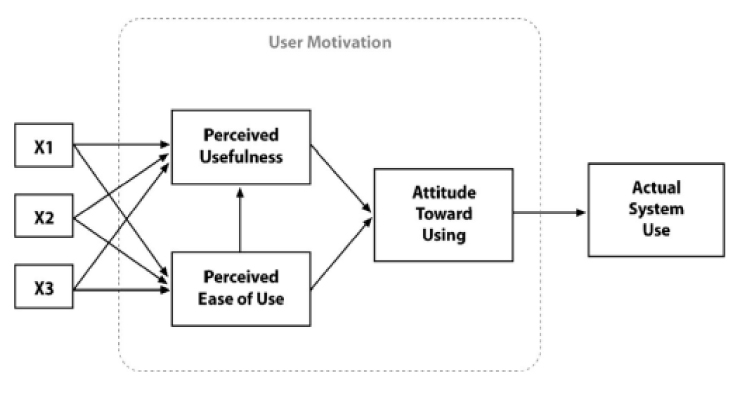
Figure 4. Original Technology Acceptance Model (Davis, 1986). Source: Marangunić, 2014.
Some new factors were added to TAM to improve its explanatory power TAM2 was proposed by adding two groups of constructs; social influence (image, subject norms and voluntariness), and cognitive (result demonstrability, job relevance and output quality) to TAM, to improve the predictive power of perceived usefulness.
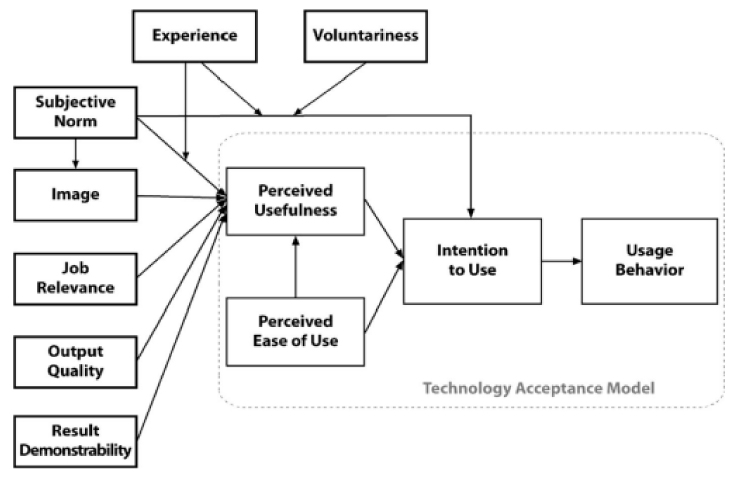
Figure 5. TAM2. Source: Marangunić, 2014.
The second study identified constructs that influence on perceived ease of use (Taherdoost, 2018, p. 963).
TAM is widely used in assessment of adoption of IT services which was systematically review in a study published in 2003 (Lee, Kozar, & Larsen, 2003). Meta-analysis of 101 articles published between 1986. and 2003. Found that TAM had progressed continually over time (Lee, Kozar, & Larsen, 2003, p. 768) while being employed on information system such as: E-mail, V-mail, FAX, Dial-up Systems, Communication, Systems, Windows, PC (or Microcomputer), WWW(or e-commerce), Workstation Computer, Resource Center, General Purpose Systems, Groupware, Word processor, Spreadsheet and Presentation S/W (Lee, Kozar, & Larsen, 2003, p. 759), adoption of social media (Rauniar, Rawski, Yang, & Johnson, 2013) Al-Emran at. al. conducted a study to systematically review TAM related to M-learning studies to discuss the implications of analysis results (Al-Emran, Mezhuyev, & Kamaludin, 2018, p. 20).
In another study, Venkatesh, Morris, Davis, and Davis (2003) formulated and validated an integrated model that, was an extension of TAM and termed it a ‘Unified Theory of Acceptance and Use of Technology’ (UTAUT) (Koul & Eydgahi, 2017, p. 107)
Unified Theory of Acceptance and Use of Technology (UTAUT)
Venkatesh et al. (2003) argued that researchers were faced with a large number of similar constructs offered by many theories and found that they “pick and choose” constructs from the models or opt for a “favoured model”, with the result that the other models were largely ignored. Consequently, they synthesized the propositions put forth by different models of acceptance, and proposed the Unified Theory of Acceptance and Use of Technology (UTAUT; Venkatesh et al. 2003).
The UTAUT has four predictors of users’ behavioural intention and these are performance expectancy, effort expectancy, social influence and facilitating conditions. The five similar constructs including perceived usefulness, extrinsic motivation, job-fit, relative advantage and outcome expectations form the performance expectancy in the UTAUT model while effort expectancy captures the notions of perceived ease of use and complexity. As for the social context, Venkatesh et al. (2003) validation tests found that social influence was not significant in voluntary contexts. (Lai, 2017, p. 31). Maruping et. al. introduced behavioural expectation into as an externally oriented predictor of IT use and identifying its antecedents (Maruping, Hilol, Viswanath, & Brown, 2016, p. 10).
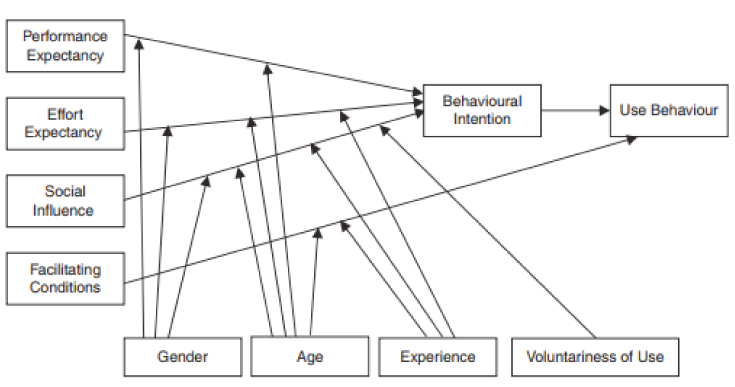
Figure 6. UTAUT as defined in Venkatesh, 2003. Source: Williams et. al., 2015.
There are numerous researches that applied UTAUT to assess acceptance of new technologies. UTAUT has been used to analyse citizen’s acceptance of e-government services in Kuwait (AlAwadhi & Morris, 2008) and in Kingdom of Saudi Arabia (Alshehri, Drew, & AlGhamdi, 2013). Tan and Juin adopted UTAUT to assess the factors affecting the use of e-learning websites in Taiwan. (Tan & Juinn, 2013). Another study tested the framework of UTAUT for understanding the main determinants of the adoption of mobile messaging applications (Hanifi Murat Mutlu, 2017). Williams et. Al. published a literature review based on analyses of 174 existing articles on UTAUT to present the current state of the UTAUT-related research (Williams, Rana, & Dwivedi, 2015, p. 469).
Research
For the purpose of this article, authors had conducted first in the series of research of new technology use and acceptance.
Research goals
Main goal is to question the measure of satisfaction within the sample, court workers and state attorney office in Croatia, with the use of new technology that converst speech to text and to define main reasons of satisfacion or dissatisfaction.
Specific goals
To question in which situations are the workers using said speech to text systems.
To question what are the benefits or expectations of the users with the new technology.
Define problems in technology use.
To question in which measure are the workers using similar technology in private.
Confirm differences in all the above considering sex, age and workplace.
Method
Questionnaire.
Sample
For the purpose of this article the authors analyzed 50 questioned workers from the courts and state attorney office who had implemented NEWTON Dictate speech-to-text technology.
Research conducted
Between 20.08.2018. to 10.09.2018. the authors conducted a questionnaire among court workers and state attorneys who implemented NEWTON Dictate speech-to-text technology. From the list of users we randomly contacted 50 individuals that had been using said technology for some time. Example of the questionnaire for this research phase is as follows.
Questionnaire
Do you accept to participate in the research and allow for your answers to be used for future processing and analyses?
a) Yes b) No
If no, abort questionnaire.
Age ________________0
Workplace
a) Judge b) Deputy of chief state attorney c) Deputy of USKOK principal
d) Court advisor e) Administrator/typist
Are you assisted by the administrator staff during document creation (i.e. Transcription in MS word, document scanning etc)?
a) Always
b) Almost always
c) Sometimes
d) I have no support
Do you create digital documents after work hours in your work overtime?
a) Sometimes (a couple of times yearly)
b) Frequently (one a week, few times per month)
c) Never*
• If the answer is C, skip next question.
How necessary is for you to spend less time on document creation than now?
a) Extremely necessary
b) Necessary
c) Neither
d) Mostly not necessary
e) Completely not necessary
How often, in everyday life, are you using speech-to-text technology (voice operations in Google search, phonebook voice search etc.).
a) Very frequently (every day or almost every day)
b) Frequently (once a week, few times per month)
c) Sometimes (few times per year)
d) Never*
In your opinion, how useful will NEWTON Dictate solution be for you?
a) Extremely useful
b) Useful
c) Partially useful
d) Not useful at all
e) I don’t know
Results and discussion
Table 1.
|
Workplace |
||||
Judge |
Deputy of chief state attorney |
Deputy of USKOK principal |
Court advisor |
Administrator/typist |
|
f |
26 |
13 |
0 |
6 |
0 |
% |
57,8 |
28,9 |
0,0 |
13,3 |
0,0 |
Majority of questioned are judges with deputy of chief state attorney after them. The sample is lacking typists which might be a minus in this research since they are the persons that will mostly be influenced by this technology and will not be asked for their opinion.
Table 2.
|
Are you assisted by the administrator staff during document creation (i.e. Transcription in MS word, document scanning etc) |
|||
Always |
Almost always |
Sometimes |
I have no support |
|
f |
18 |
8 |
16 |
3 |
% |
40,0 |
17,8 |
35,6 |
6,7 |
On the other hand, judges and deputies create most of the documents with the help of administrators.
Table 3.
|
Do you create digital documents after work hours in your work overtime? |
||
Sometimes (a couple of times yearly) |
Frequently (one a week, few times per month) |
Never |
|
f |
14 |
17 |
14 |
% |
31,1 |
37,8 |
31,1 |
According to the results of Table 3 these type of work is done everyday and could be considered usual in justice occupation. There are factual differences in the type of judicial, or state attorneys, work and the capacities of certain courts considering the field it serves. Some of them are, therefore, field workers, some work from home and some are simply working out of hours.
Table 4.
|
How necessary is for you to spend less time on document creation than now? |
||||
Extremely necessary |
Necessary |
Neither |
Mostly not necessary |
Completely not necessary |
|
f |
8 |
20 |
3 |
2 |
0 |
% |
17,8 |
44,4 |
6,7 |
4,4 |
0,0 |
As seen in Table 4, such jobs are quite demanding for the sample with more than 60% considering they extremely need, or at least need, to use less time for digital document creation.
Table 5.
|
How often, in everyday life, are you using speech-to-text technology (voice operations in Google search, phonebook voice search etc.). |
|||
Very frequently (every day or almost every day) |
Frequently (once a week, few times per month) |
Sometimes (few times per year |
Never |
|
f |
1 |
5 |
10 |
28 |
% |
2,2 |
11,1 |
22,2 |
62,2 |
In everyday life approximately 40% use at least sometimes some of the technologies that converts voice to text. It can be assumed that those are Internet browsers and mobile phone voice to text messages. IT companies are promoting the use of this technology so it can be expected that the number of users will rise in time. Education that this company is doing in Croatia will certainly influence the development, use and understanding of this technology in general.
Table 6.
|
In your opinion, how useful will NEWTON Dictate solution be for you? |
||||
Extremely useful |
Useful |
Partially useful |
Not useful at all |
I don’t know |
|
f |
14 |
18 |
4 |
0 |
5 |
% |
31,1 |
40,0 |
8,9 |
0,0 |
11,1 |
Not one person responded that the new technology will be not useful at all. Majority (over 70%) thinks that the new technology will be useful for them. These results confirm the awareness of justice workers for optimisation and IT advancement of their system.
This questionnaire consists of many more questions which give way for various research and insight into use of new, innovative technology. Another research will be conducted after 3 years on the same sample of 700 people (50 was sample size in this research) with more thorough understanding of users’ approach to new technology. The most important being the information that there is only 6,7% of users without assistance which might, in general, raise opinion that the users should now do the work themselves which might turn them away from using this type of technology. The users that have no assistant are used to generate documents and are willing to use any tool to expedite that process. In practice, targeting and sound management is of great importance in determining the users of new technology. The conclusion is that the series of research in this specific technology use is still relatively new and sample sizes are smaller which should make our research series quite useful and influential.
Bibliography:
Ajzen, I. (1985). From intentions to actions: A theory of planned behavior. In J. Kuhl, & J. Beckman (Eds.), Action control: From cognition to behavior (pp. 11-39). Heidelberg.
AlAwadhi, S., & Morris, S. A. (2008). The Use of the UTAUT Model in the Adoption of E-government Services in Kuwait. 1st Hawaii International Conference on System Sciences - 2008.
Al-Emran, M., Mezhuyev, V., & Kamaludin, A. (2018). Technology Acceptance Model in M-learning context: A systematic review. Computers & Education, 125, 389-412. doi:10.1016/j.compedu.2018.06.008.
Alshehri, M., Drew, S., & AlGhamdi, R. (2013, April). Analysis of citizens' acceptance for E-government services: Applying the UTAUT model. Retrieved September 01, 2019, from ResearchGate: https://www.researchgate.net/publication/258841651_Analysis_of_Citizens_Acceptance_for_E-government_Services_Applying_the_UTAUT_Model.
Chatterton, T. (2011, December). An introduction to thinking about `energy behaviour': A multi-model approach. Retrieved from ResearchGate.com.
Davis, F. D. (1991). User acceptance of information technology: system characteristics, user perceptions and behavioural impacts. Int. J. Man - Machine Studies, 38, 475-487.
Encyclopedia.com. (2019). "new technology". Retrieved 09 06, 2019, from A Dictionary of Sociology: https://www.encyclopedia.com/social-sciences/dictionaries-thesauruses-pictures-and-press-releases/new-technology.
Hanifi Murat Mutlu, A. D. (2017). UNIFIED THEORY OF ACCEPTANCE AND USE OF TECHNOLOGY: THE ADOPTION OF MOBILE MESSAGING APPLICATION. Retrieved 08 19, 2019, from Researchgate: https://www.researchgate.net/publication/317067606_Unified_theory_of_acceptance_and_use_of_technology_The_adoption_of_mobile_messaging_application/fulltext/59277aa9aca27295a800e922/Unified-theory-of-acceptance-and-use-of-technology-The-adoption-of-mobile.
Ilin, V., Ivetić, J., & Simić, D. (2017). Understanding the determinants of e-business adoption in ERP-enabled firms and non-ERP-enabled firms: A case study of the Western Balkan Peninsula. Technological Forecasting & Social Change(125), 206-223.
Isleem, M. I. (2003). RELATIONSHIPS OF SELECTED FACTORS AND THE LEVEL OF COMPUTER USE FOR INSTRUCTIONAL PURPOSES BY TECHNOLOGY EDUCATION TEACHERS IN OHIO PUBLIC SCHOOLS: A STATEWIDE SURVEY. Dissertation. The Ohio State University.
Koul, S., & Eydgahi, A. (2017). A systematic review of technology adoption frameworks and their applications. Journal of Technology Management & Innovation, 106-113.
Lai, P. (2017). THE LITERATURE REVIEW OF TECHNOLOGY ADOPTION MODELS AND THEORIES FOR THE NOVELTY TECHNOLOGY. JISTEM - Journal of Information Systems and Technology Management, 14(1), 21-38. doi: 10.4301/S1807-17752017000100002.
Lee, Y., Kozar, K., & Larsen, K. (2003, January). The Technology Acceptance Model: Past, Present, and Future. Communications of the Association for Information Systems, 12, 752-780. doi:DOI: 10.17705/1CAIS.01250.
Marangunić, N., & Granić, A. (2014). Technology acceptance model: a literature review from 1986 to 2013. Universal Access in the Information Society, 14(1), 81-95.
Maruping, L., Hilol, B., Viswanath, V., & Brown, S. A. (2016). Going Beyond Intention: Integrating Behavioral Expectation Into the Unified Theory of Acceptance and Use of Technology. JOURNAL OF THE ASSOCIATION FOR INFORMATION SCIENCE AND TECHNOLOGY. doi:10.1002/asi.23699.
Momani, A., & Mamoum, J. (2017). The Evolution of Technology Acceptance Theories. International Journal of Contemporary Computer Research (IJCCR).
Pulikanti, S., & Habib, K. N. (2016, January). Investigating the Choice Making Behaviour of Transport Users: The Role of Psychology and Choice Contexts in Commuting Mode Choice Process. Retrieved 09 05, 2019, from Researchgate.com: file:///C:/Users/Ma%C5%A1a/Downloads/ChoiceMakingBehviour_Shashank-Habib_V03.pdf.
Rauniar, R., Rawski, G., Yang, J., & Johnson, B. (2013). Technology acceptance model (TAM) and social media usage: an empirical study on Facebook. Journal of Enterprise Information Management, 27(1), 6-30. doi:DOI 10.1108/JEIM-04-2012-0011.
Rogers, E. M. (1983). DIFFUSION OF INNOVATIONS (3rd ed.). The Free Press, A Division of Macmillan Publishing Co., Inc.
Sahin, I. (2006). DETAILED REVIEW OF ROGERS’ DIFFUSION OF INNOVATIONS THEORY AND EDUCATIONAL TECHNOLOGY-RELATED STUDIES BASED ON ROGERS’ THEORY. The Turkish Online Journal of Educational Technology – TOJET, 5(2).
Scherer, R., Siddiq, F., & Tondeur, J. (2018). The technology acceptance model (TAM): A meta-analytic structural equation modeling approach to explaining teachers’ adoption of digital technology in education. Computers & Education (Accepted manuscript). doi:https://doi.org/10.1016/.
Taherdoost, H. (2018). A review of technology acceptance and adoption models and theories. Procedia Manufacturing 22, 960-967.
Tan, P., & Juinn, B. (2013). Applying the UTAUT to Understand Factors Affecting the Use of English E-Learning Websites in Taiwan. SAGE Open. doi:https://doi.org/10.1177/2158244013503837.
Venkatesh, V., Morris, G., Davis, M. &., & Gordon & Davis, F. (2003). Acceptance of Information Technology: Toward a Unified View. MIS Quarterly, 425-478.
Weidman, J., Young-Corbett, D., Fiori, C., Koebel, T., & Montague, E. (n.d.). Innovative Solutions for Compliance and Research Management. Retrieved August 20, 2019, from Prevention through Design: Use of the Diffusion of Innovation Model to Predict Adoption: https://www.irbnet.de/daten/iconda/CIB_DC24386.pdf.
Wikipedia. (2019, Septmeber 06). Diffusion of innovations. Retrieved from Wikipedia.org: https://en.wikipedia.org/wiki/Diffusion_of_innovations.
Williams, M. D., Rana, N., & Dwivedi, Y. K. (2015). The unified theory of acceptance and use of technology (UTAUT): A literature review. Journal of Enterprise Information Management. doi:DOI: 10.1108/JEIM-09-2014-0088.
Preliminarna komunikacija i istraživanje
u serijama humanističke sociologije:
Modeli prihvaćanja novih tehnologija na radnom mjestu
kroz utjecaj komunikacije na ponašanje pojedinca
Sažetak
Novom tehnologijom naziva se bilo koji skup produktivnih tehnika koji nudi značajna poboljšanja. Ono što se vidi kao novo očito je podložno neprestanoj redefiniciji, budući da se događaju uzastopne promjene u razvoju tehnologije. Društveni i politički učinak novih tehnologija složen je i podložan razlikama u upravljačkim strategijama, otporu radnika i mnoštvom drugih kulturnih i političkih okolnosti. Korisničko usvajanje novih tehnologija i modela koji objašnjavaju njihova ponašanja je aktualan istraživački problem.
Utvrđivanje čimbenika koji utječu na prihvaćanje novih tehnologija razumijeva se razvojem modela prihvaćanja tehnologije i teorija s različitim teoretskim uvidima, varijablama i mjerenjima. Prepoznavanje potreba pojedinaca ujedno je i prepoznavanje čimbenika koji utječu na prihvaćanje ili odbijanje novih tehnologija. Istraživači danas mogu konceptualizirati modele prihvaćanja koji mogu utjecati na prethodne, trenutačne, ali i buduće primjene navedenih modela. Tijekom studije slučaja, 50 korisnika nove tehnologije u Hrvatskoj je ispitano za prednosti i mane te je zaključeno da će većina imati koristi od iste.
Key words: nove tehnologije, prihvaćanje tehnologije, modeli prihvaćanja tehnologije, društvena humanistika, komunikologija, interakcija čovjeka i računala.


